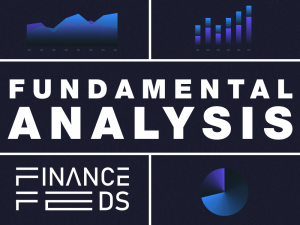ASIC keeps size of maximum penalty for client money reporting rules violations at $1 million
Although the Australian regulator stuck to the size of the maximum penalties for the new rules violations, it agreed to make a range of concessions regarding certain deadlines for reporting.

Earlier today, the Australian Securities & Investments Commission (ASIC) has published the final version of the ASIC Client Money Reporting Rules 2017, which aim to impose requirements on Australian financial services licensees to ensure greater transparency in the use of derivative retail client money and enhance ASIC’s surveillance of the retail derivatives sector.
The client money reporting rules require a licensee that holds ‘reportable client money’ to:
- keep accurate records of the amount of reportable client money it receives on both an individual client basis and a total basis;
- perform daily and monthly reconciliations of the amount of reportable client money it has recorded in its records against the amount actually held in the client money account;
- notify ASIC if it fails to perform a reconciliation in accordance with the client money reporting rules;
- prepare and give to ASIC an annual directors’ declaration and an external auditor’s report on its compliance with the client money reporting rules; and
- establish, implement and maintain policies and procedures designed to ensure compliance with the client money reporting rules.
In the final version of the rules, ASIC has considered feedback it received from the industry. Also today, the regulator published a separate report, in which it details its response to this feedback.
- The penalties
The submissions ASIC received expressed concern that the maximum penalties for contravening the client money reporting rules were too harsh and excessive. ASIC, however, considers that all client money reporting rules should remain subject to a maximum penalty amount of $1,000,000. The regulator noted that, in the case of minor or insignificant breaches of the client money reporting rules, it is very unlikely that the maximum penalty amount will be imposed.
“We consider that a maximum penalty amount of $1,000,000 is an appropriate deterrent to breaching requirements in the client money reporting rules, which we consider to be very important for protecting retail investors”, ASIC said.
- Reconciliations of money held ‘as at’ a particular time
ASIC had proposed that licensees should be required to perform daily and monthly reconciliations of the amount of reportable client money held ‘as at’ 7 pm Sydney time on the relevant business day.
Agreeing with feedback received, ASIC accepts that a licensee’s close of trading time will depend on the particular circumstances of that business. Consequently, the regulator has amended the daily and monthly reconciliation requirements in subrule 2.2.1(1) and 2.2.2(1) to require licensees to reconcile the amount of reportable client money held as at a time determined by the licensee (provided it is the same time each business day).
- Performing daily reconciliations by a particular time
ASIC had proposed that licensees should be required to perform daily reconciliations by 7 pm on the business day following the day to which the reconciliation relates (i.e. within one business day).
After considering the feedback received, the regulator accepted that requiring licensees to perform daily reconciliations within 24 hours may result in ASIC receiving a high volume of reports which contain minor discrepancies. To address this feedback, ASIC has amended the requirement in subrule 2.2.1(3) to require the daily reconciliations to be completed within three business days of the end of the business day to which the reconciliation relates.
- Information to be included in the written records of reconciliations
ASIC has provided additional guidance on complying with the client money reporting rules in INFO 226. INFO 226 provides an example of the information ASIC expects to be included in a licensee’s reconciliation records. In addition, INFO 226 clarifies that a licensee may comply with its obligations under the client money reporting rules by performing a total reconciliation which is supported by the individual client balances comprising the licensee’s ‘reportable client money’.
- Reporting a discrepancy to ASIC
ASIC had proposed that a licensee should be required to give ASIC a written report if a reconciliation performed under the client money reporting rules identifies a difference (i.e. either a surplus or a deficit) between the amount held in a client money account and the amount recorded in the licensee’s records maintained under the client money reporting rules.
ASIC considers it is not appropriate to impose a significance threshold on the reporting requirement as multiple breaches which a licensee may consider to be ‘insignificant’ may similarly raise compliance concerns.
The regulatory proposal to extend the timeframe within which the daily reconciliations should be performed to three business days should give licensees sufficient time to reconcile reportable client money balances (including identifying the source of any unidentified deposits and working through any other anomalies) and should consequently reduce the frequency with which licensees will be required to report discrepancies to ASIC.
- Annual auditor’s report and directors’ declaration—Commencement
ASIC considers that no amendment to the commencement of the requirements in this rule is necessary. Licensees should be able to ensure their compliance with these requirements for financial years ending after July 1, 2018.









